Filter by
You must be a CTBUH Member to view this resource.

Guangzhou International Finance Center
Guangzhou IFC, West Tower
Building
Completed
2010
Hotel / Office
Concrete-Steel Composite
438.6 m / 1,439 ft
101
4
374
1740
71
8 m/s
250,095 m² / 2,692,000 ft²
You must be a CTBUH Member to view this resource.
You must be a CTBUH Member to view this resource.
Proposed
Construction Start
Completed
Usually involved in the front end design, with a "typical" condition being that of a leadership role through either Schematic Design or Design Development, and then a monitoring role through the CD and CA phases.
Usually takes on the balance of the architectural effort not executed by the "Design Architect," typically responsible for the construction documents, conforming to local codes, etc. May often be referred to as "Executive," "Associate," or "Local" Architect, however, for consistency CTBUH uses the term "Architect of Record" exclusively.
The Design Engineer is usually involved in the front end design, typically taking the leadership role in the Schematic Design and Design Development, and then a monitoring role through the CD and CA phases.
The Design Engineer is usually involved in the front end design, typically taking the leadership role in the Schematic Design and Design Development, and then a monitoring role through the CD and CA phases.
The main contractor is the supervisory contractor of all construction work on a project, management of sub-contractors and vendors, etc. May be referred to as "Construction Manager," however, for consistency CTBUH uses the term "Main Contractor" exclusively.
Other Consultant refers to other organizations which provided significant consultation services for a building project (e.g. wind consultants, environmental consultants, fire and life safety consultants, etc).
These are firms that consult on the design of a building's façade. May often be referred to as "Cladding," "Envelope," "Exterior Wall," or "Curtain Wall" Consultant, however, for consistency CTBUH uses the term "Façade Consultant" exclusively.
Material Supplier refers to organizations which supplied significant systems/materials for a building project (e.g. elevator suppliers, facade suppliers, etc).
You must be a CTBUH Member to view this resource.
Usually involved in the front end design, with a "typical" condition being that of a leadership role through either Schematic Design or Design Development, and then a monitoring role through the CD and CA phases.
Usually takes on the balance of the architectural effort not executed by the "Design Architect," typically responsible for the construction documents, conforming to local codes, etc. May often be referred to as "Executive," "Associate," or "Local" Architect, however, for consistency CTBUH uses the term "Architect of Record" exclusively.
The Design Engineer is usually involved in the front end design, typically taking the leadership role in the Schematic Design and Design Development, and then a monitoring role through the CD and CA phases.
The Design Engineer is usually involved in the front end design, typically taking the leadership role in the Schematic Design and Design Development, and then a monitoring role through the CD and CA phases.
The main contractor is the supervisory contractor of all construction work on a project, management of sub-contractors and vendors, etc. May be referred to as "Construction Manager," however, for consistency CTBUH uses the term "Main Contractor" exclusively.
Other Consultant refers to other organizations which provided significant consultation services for a building project (e.g. wind consultants, environmental consultants, fire and life safety consultants, etc).
These are firms that consult on the design of a building's façade. May often be referred to as "Cladding," "Envelope," "Exterior Wall," or "Curtain Wall" Consultant, however, for consistency CTBUH uses the term "Façade Consultant" exclusively.
Material Supplier refers to organizations which supplied significant systems/materials for a building project (e.g. elevator suppliers, facade suppliers, etc).
2020 CTBUH Awards
2011 CTBUH Awards
25 January 2019 - Event
13 October 2016 - CTBUH Research
zengsx_ccby-sa.png)
19 October 2016 | Guangzhou
Wednesday, October 19, 2016. Guangzhou, China. Chris Wilkinson of Wilkinson Eyre, presents at the 2016 China Conference Plenary 5: "Beyond Guangzhou: Other Settings" Using four...
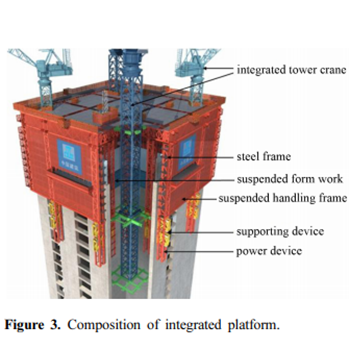
01 September 2018
Kun Zhang & Hui Wang & Kaiqiang Wang & Jian Cui & Bo Chen and Di Li, China Construction Third Engineering Bureau Group Co., Ltd
The construction of rapid developing super high-rise buildings constantly faces great challenges and the innovation of construction equipment is a focus of these challenges. In...
Guangzhou International Finance Center is a landmark tower which defines the emerging international strength of China’s third largest city and serves as a landmark for Guangzhou Zhujiang New Town’s main axis, which links the commercial district in the north with the Pearl River to the south. At the time of its completion it was the fourth tallest building in China and the ninth tallest building in the world. Its elegant simplicity belies the complex geometry of form and structure which makes it possible. Each of the three façades of the curved triangular plan are also curved in section with a radius of 5.1km set out asymmetrically with the widest point at a third of the height, tapering to its narrowest point at the top. There is no spire, and the three curved façades continue up beyond the highest floor and, in some views, seems to disappear to infinity. The highest point is a helicopter landing pad which hovers over the central atrium just overhanging the perimeter cladding. The inside of this atrium, with its crystalline geometry, sparkles with abundant daylight and is taller than the height of London’s St. Paul\'s Cathedral, including its dome.
Its rounded triangular plan responds to the need for efficient internal space layouts and excellent environmental performance. The tower has a mixture of uses including office space, a luxury hotel and a top floor observation area. Office floors occupy levels 2 through 67 and a Four Seasons hotel is on levels 67 through 101. The tower has a triple height 12 m (39 ft) high entrance lobby which rings the base of the tower and allows secure access to the building’s double decker shuttles and standard lift groupings. The main lobby also connects via escalators to a secondary office lobby located at the lower basement level, which in turn allows access to below ground retail and the MTR station. A further dedicated lobby and set down has been formed at ground level for the hotel. At ground level, the tower connects with a substantial podium complex containing a retail mall, conference center and serviced apartments. The tower and podium connect to a large retail mall and transport hub below ground, with a retail loop encouraging connections underneath a landscaped central axis.
The building utilizes the world’s tallest constructed diagrid structure which is clearly expressed though the building’s façade and gives the building considerable character. The diagrid members are formed from concrete filled steel tubes which provide both good stiffness and fire protection to the structure. However, two hour fire protection was still required in order to meet codes and this was trowel applied directly to the building’s primary structure. The tubular diagrid structure “nodes-out” every 12 stories to form 54 m (177 ft) high giant steel diamonds. At the base of the tower the structural members are 1800 mm (70 in) in diameter and reduce in size up the building to 900 mm (35 in) at the top of the building.
The structural core takes much of the gravity load of the building’s floors and is linked back to the diagrid perimeter structure via floor beams to create a stiff “tube-within-a-tube” structural system. The inherent stiffness in the structure minimizes steel tonnage while providing inherent stiffness and resistance to acceleration and sway, thereby maintaining high comfort levels for the building’s occupants. This stiffness and resistance to acceleration means that no damping of the structure is required.
The building has been designed to be a low carbon and sustainable building. The shape of the building has been designed to reduce the effects of wind, thereby reducing the necessary size and weight of the structure. In addition to fundamental passive measures such as orientation, sustainable building systems have been incorporated into the design which address issues such as comfort, maintenance and cost while paying due regard to environmental sustainability and energy conservation. These include: solar thermal hot water; air-side energy recovery; heat recovery chiller; ice storage system; desiccant dehumidification; high-rise air discharge pressure CFD analysis; free cooling system; and variable air volume.
2020 CTBUH Awards
2011 CTBUH Awards
zengsx_ccby-sa.png)
19 October 2016 | Guangzhou
Wednesday, October 19, 2016. Guangzhou, China. Chris Wilkinson of Wilkinson Eyre, presents at the 2016 China Conference Plenary 5: "Beyond Guangzhou: Other Settings" Using four...

11 June 2013 | Guangzhou
An increase in high-rise living in traditionally commerce-focused urban centers has been a key urban trend in cities across the entire globe. This has great...

20 September 2012 | Guangzhou
When a tower rises above the cityscape, it has a responsibility to make a positive contribution and a grouping of towers should make a visually...

20 September 2012 | Guangzhou
Chris Wilkinson of Wilkinson Eyre Architects is interviewed by Jeff Herzer during the 2012 CTBUH Shanghai Congress at the Jin Mao, Shanghai. Chris talks about...

03 November 2011 | Guangzhou
The tallest of the four regional winners this year at 440 meters, the Guangzhou International Finance Center utilizes the world’s tallest constructed diagrid structure, whose...

03 November 2011 | Guangzhou
The 10th Annual Awards Ceremony & Dinner was held in Mies van der Rohe’s iconic Crown Hall, on the Illinois Institute of Technology campus, Chicago....

03 November 2011 | Guangzhou
Chris Wilkinson & Dominic Bettison of Wilkinson Eyre Architects, Michael Kwok & Craig Gibbons of Arup are interviewed by Jeff Herzer during the 2011 CTBUH...

05 March 2008 | Guangzhou
Sam Lee, of Guangzhou Scientific Computing Consultants, presented a solution on the ABAQUS platform at the CTBUH 8th World Congress in Dubai by selecting the...

01 September 2018
Kun Zhang & Hui Wang & Kaiqiang Wang & Jian Cui & Bo Chen and Di Li, China Construction Third Engineering Bureau Group Co., Ltd
The construction of rapid developing super high-rise buildings constantly faces great challenges and the innovation of construction equipment is a focus of these challenges. In...
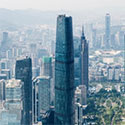
01 March 2017
Michael Kwok & Alexis Lee, Arup
The Guangzhou International Finance Centre (IFC) is a landmark building that symbolizes the emerging international strength of Guangzhou, China’s third largest city. It is also...
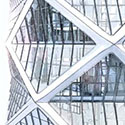
01 December 2016
Kheir Al-Kodmany, University of Illinois; Mir M. Ali, University of Illinois at Urbana-Champaign
There is much architectural and engineering literature which discusses the virtues of exterior bracing and diagrid systems in regards to sustainability - two systems which...
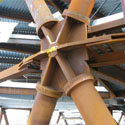
01 December 2016
Terri Meyer Boake, University of Waterloo
The diagrid structural system for constructing tall buildings is a recent invention. Debuting in 2004 with the construction of the Swiss Re Tower in London,...
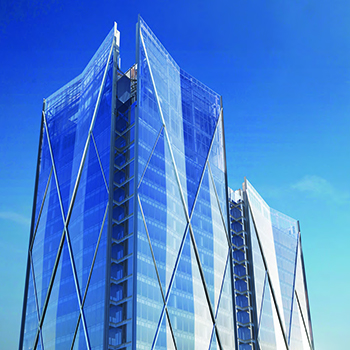
17 October 2016
Chris Wilkinson, Wilkinson Eyre Architects
Using four tower designs on four continents – the Guangzhou International Finance Center in China, the Crown Sydney Resort Hotel in Australia, 45 Bay Street...

01 September 2015
Ye Haowen, China State Construction Engineering Corporation
Experience on the construction of several 100-plus-story skyscrapers including Guangzhou West Tower, Guangzhou East Tower, and Shenzhen’s KK100 is described considering the increasingly strong development...

11 June 2014
CTBUH Research
In this installment of Tall Buildings in Numbers, CTBUH considers how helipads are used on skyscrapers, and which are the highest in the world. The...
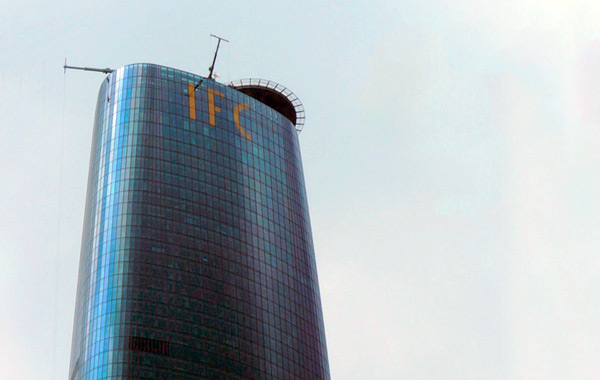
13 January 2013
The Guangzhou International Finance Center is not only recognised as the tallest building in Guangzhou, but one of the most beautiful. A triangular base supports...
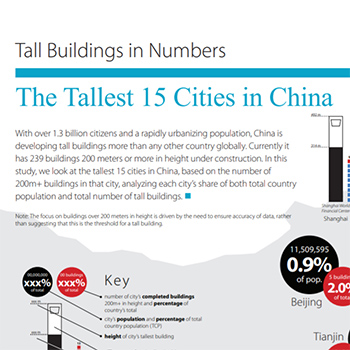
23 September 2012
CTBUH Research
With over 1.3 billion citizens and a rapidly urbanizing population, China is developing tall buildings more than any other country globally. Currently it has 239...

19 September 2012
Chris Wilkinson, Wilkinson Eyre Architects Ltd
The design for the Guangzhou International Finance Centre makes the case for a high rise aesthetic that aims for an elegant simplicity, but expresses the...
25 January 2019
The CTBUH China Office successfully held a Symposium in Guangzhou revolving around the theme: "Spatial Design: Inside and Outisde of Skyscrapers."
13 October 2016
The Council is pleased to announce the Top Company Rankings for numerous disciplines as derived from the list of projects appearing in 100 of the World’s Tallest Buildings.
Subscribe below to receive periodic updates from CTBUH on the latest Tall Building and Urban news and CTBUH initiatives, including our monthly newsletter. Fields with a red asterisk (*) next to them are required.
View our privacy policy